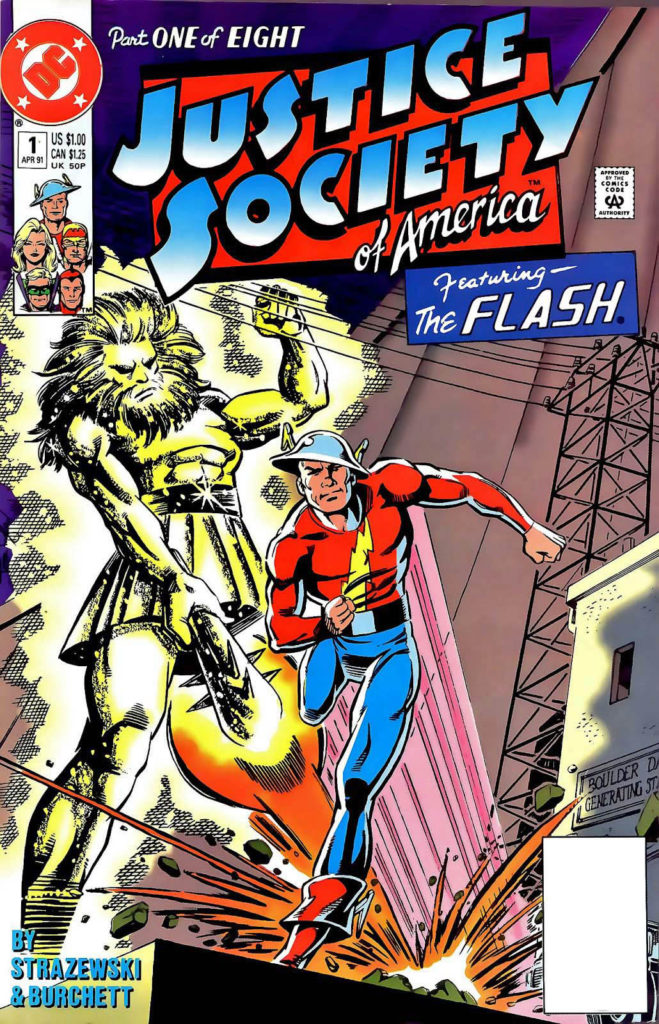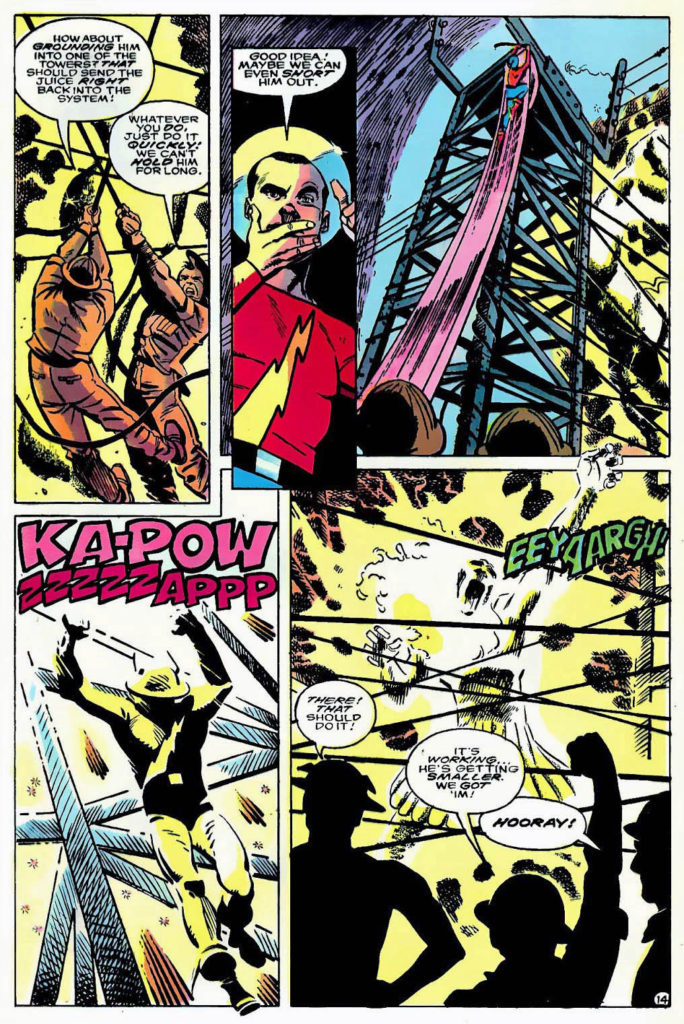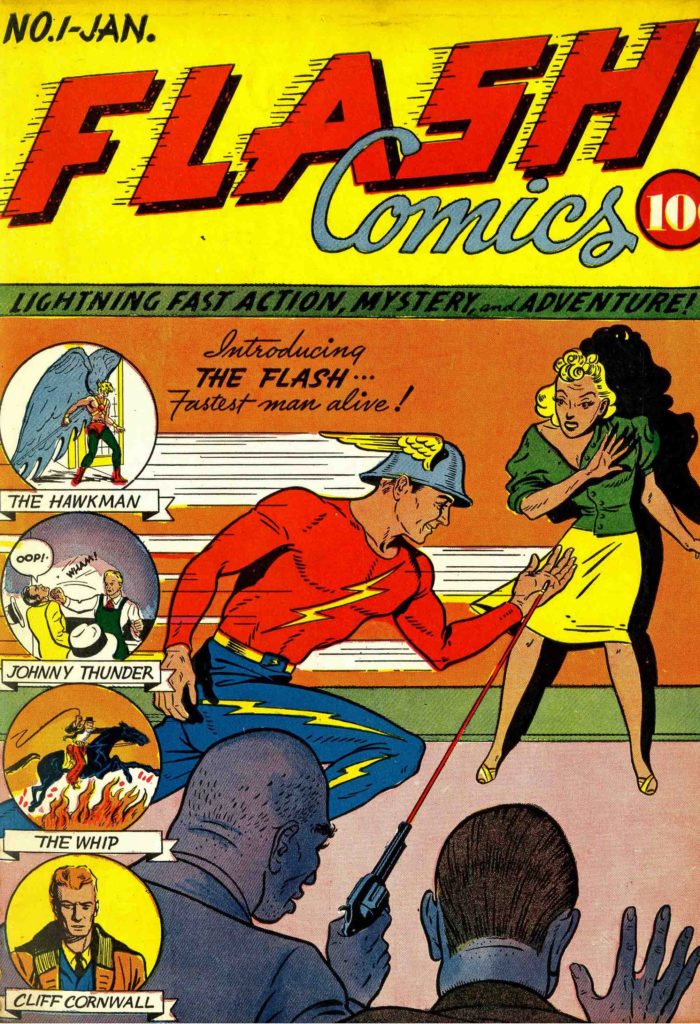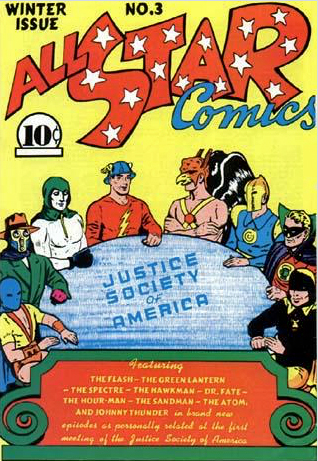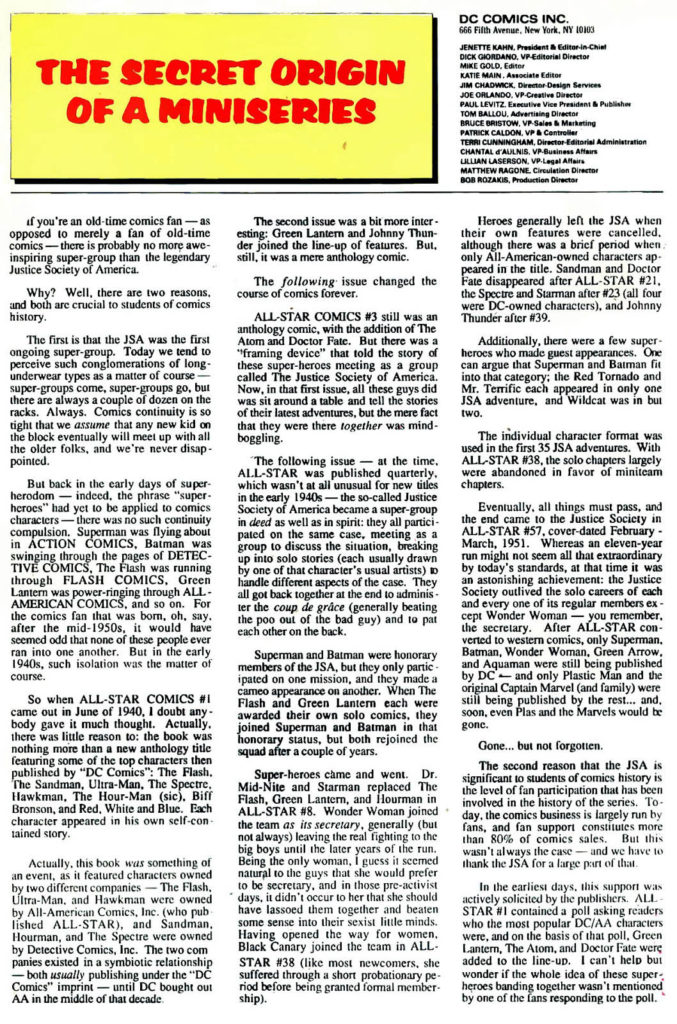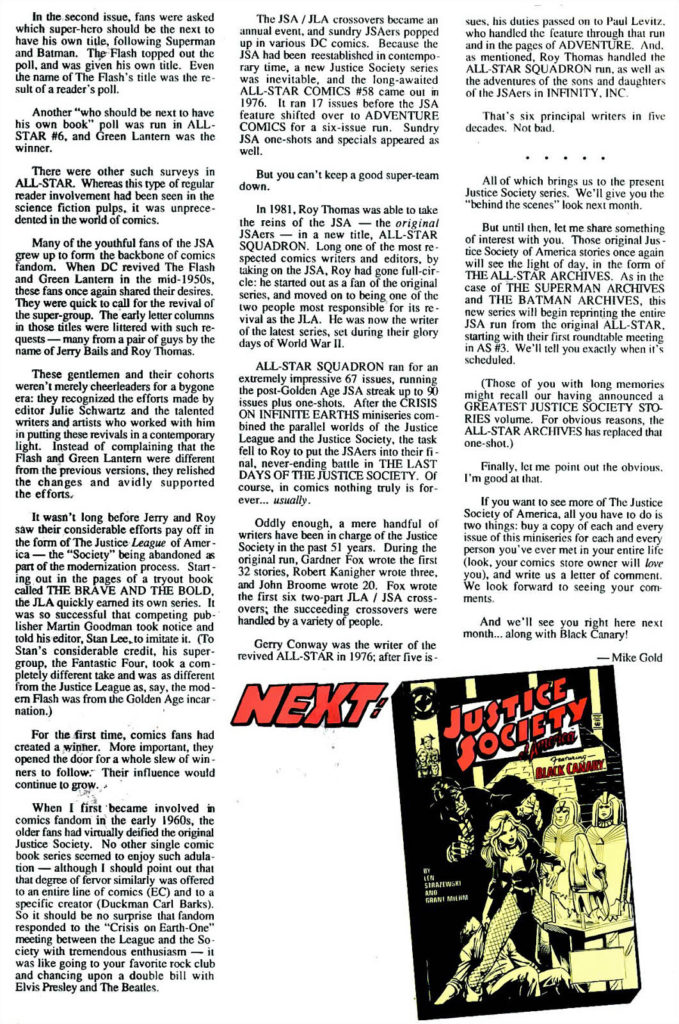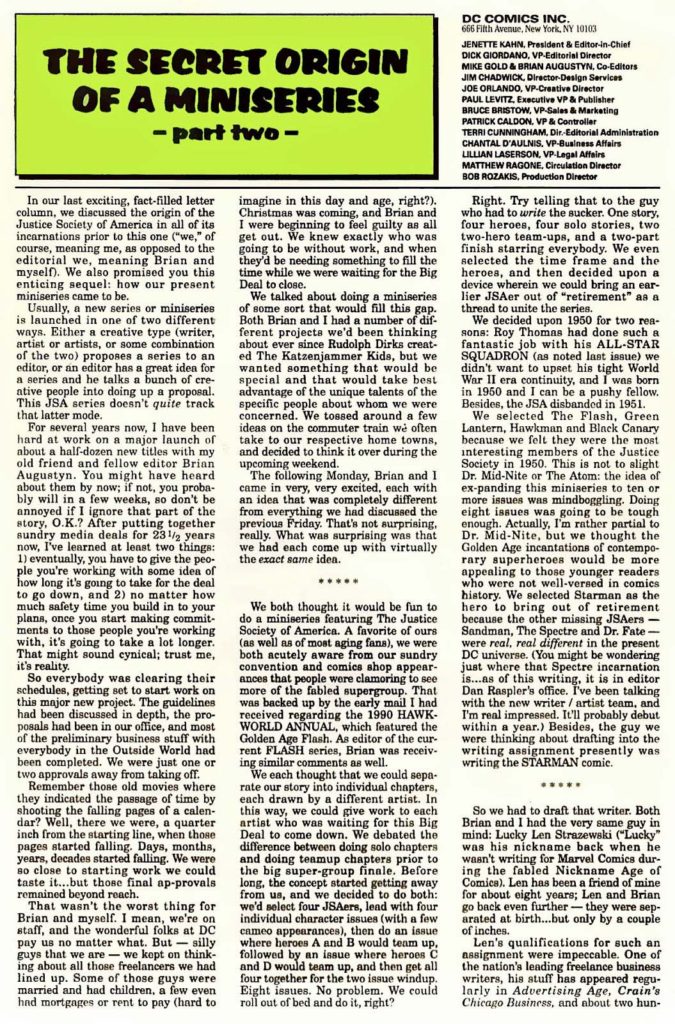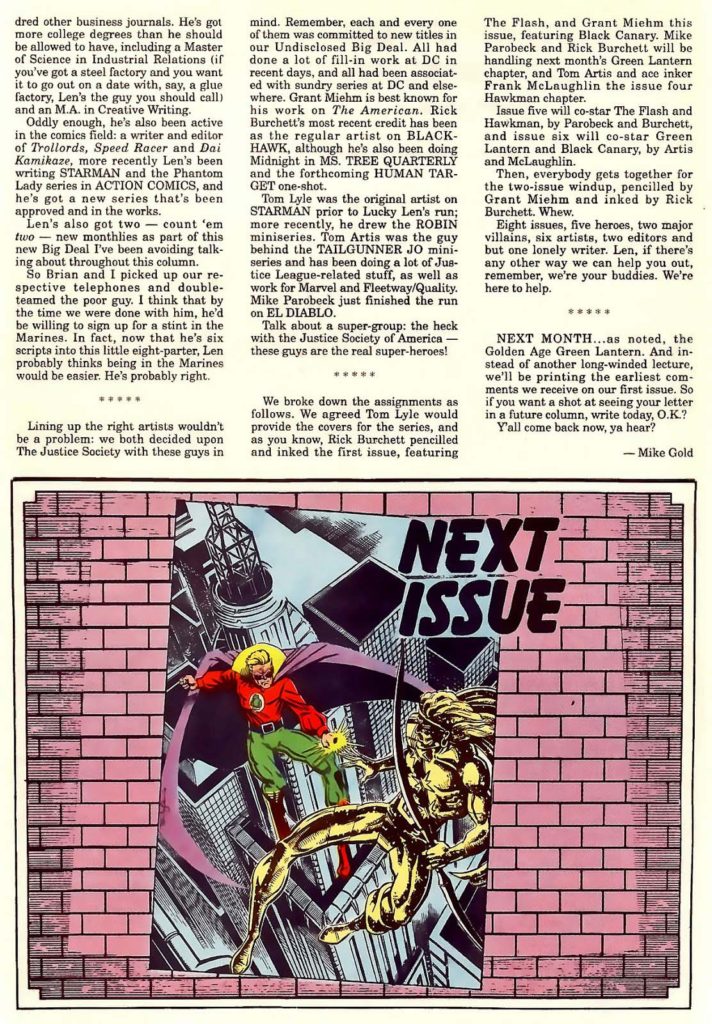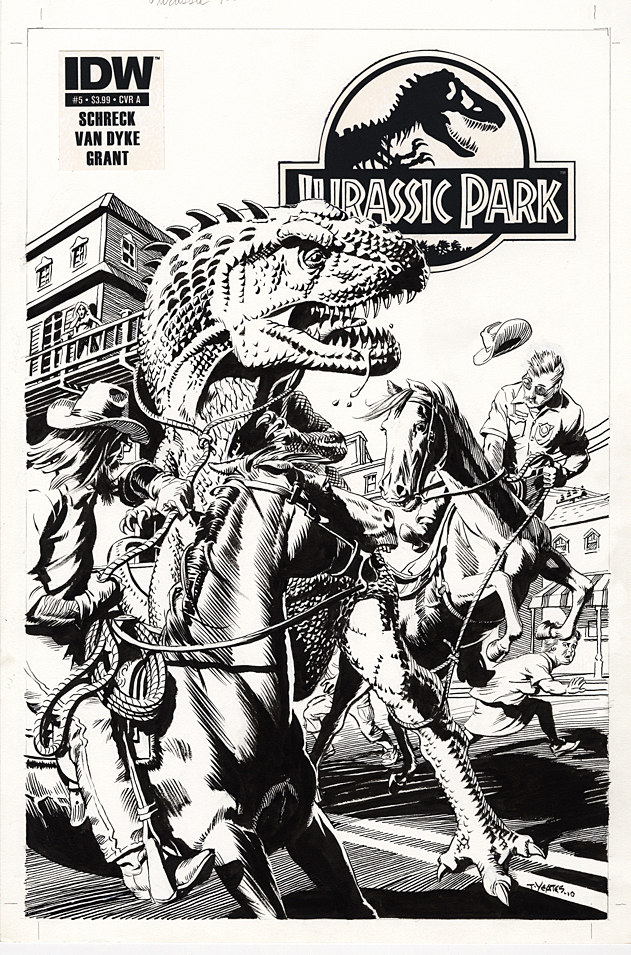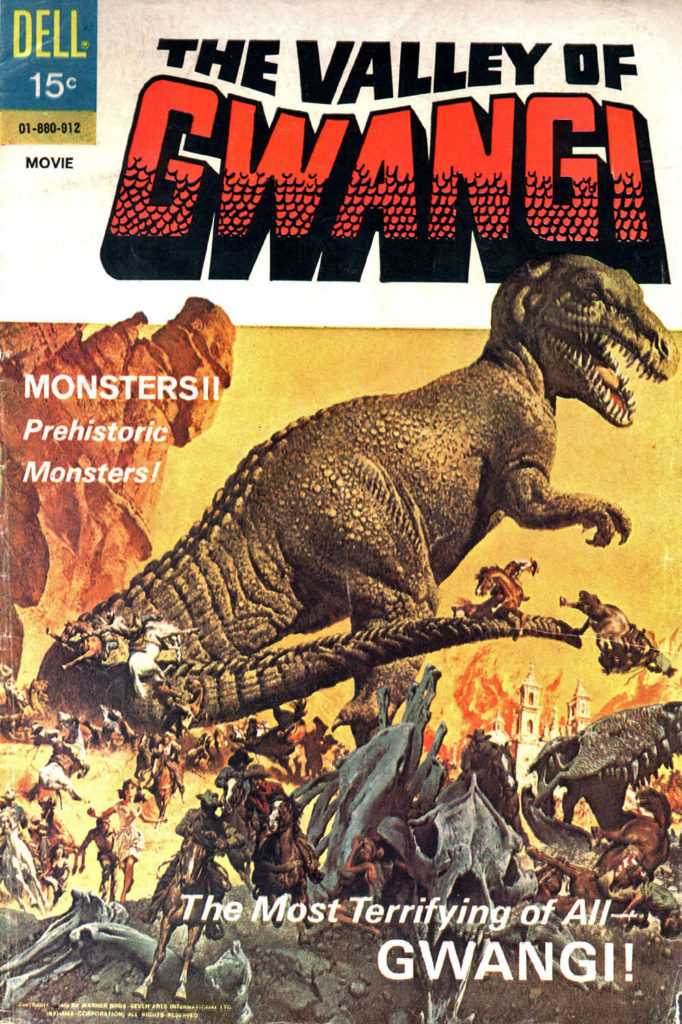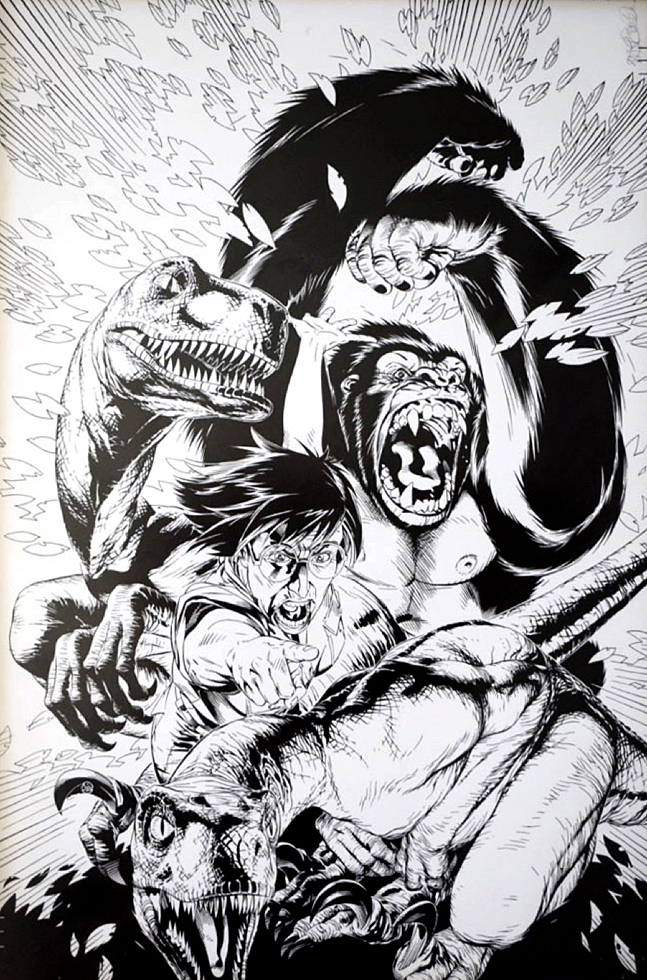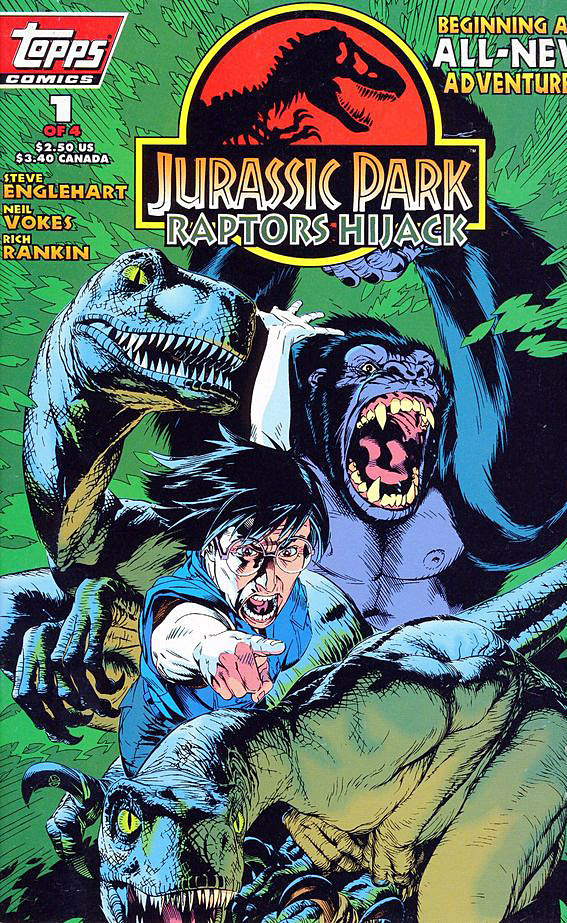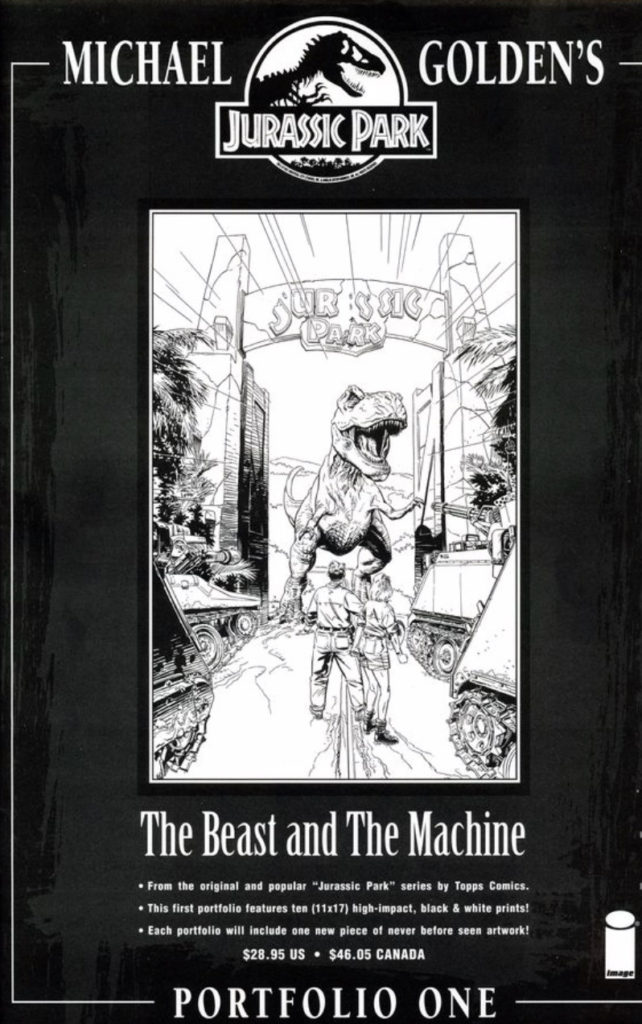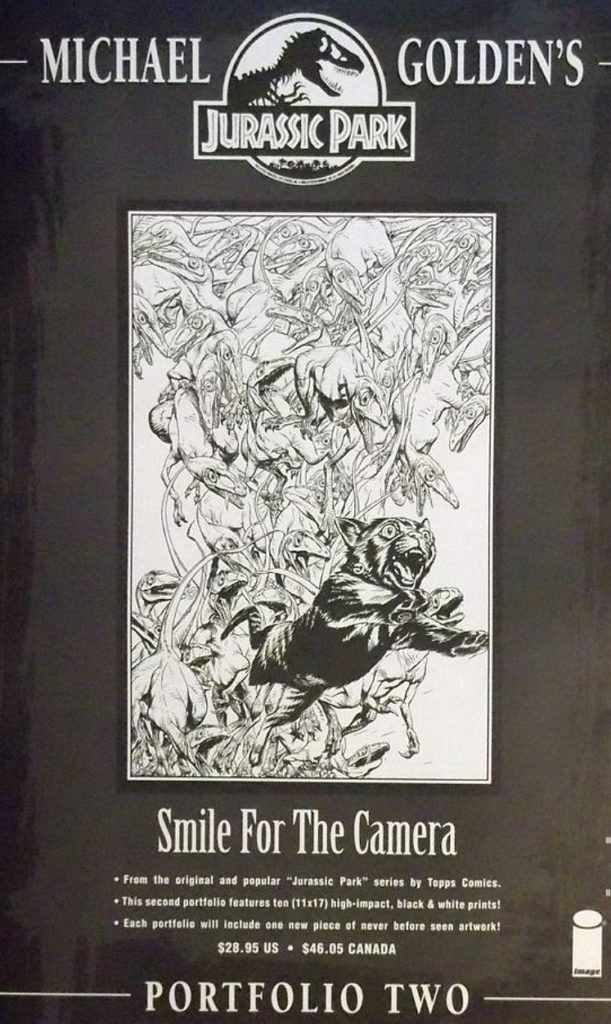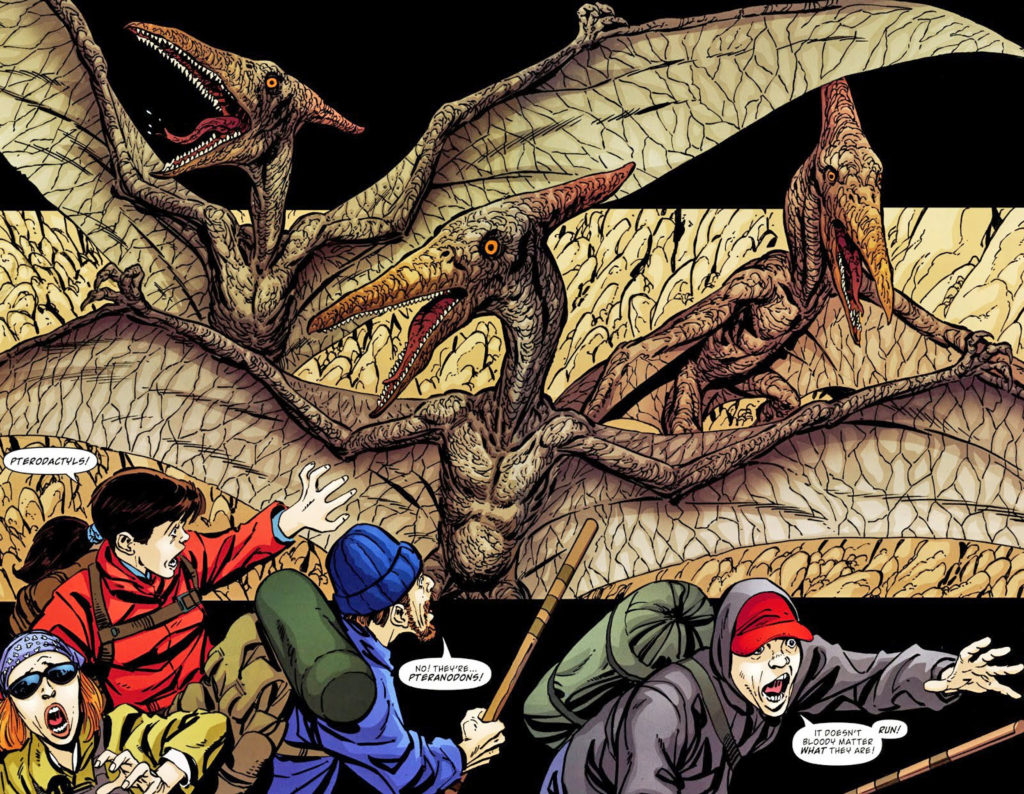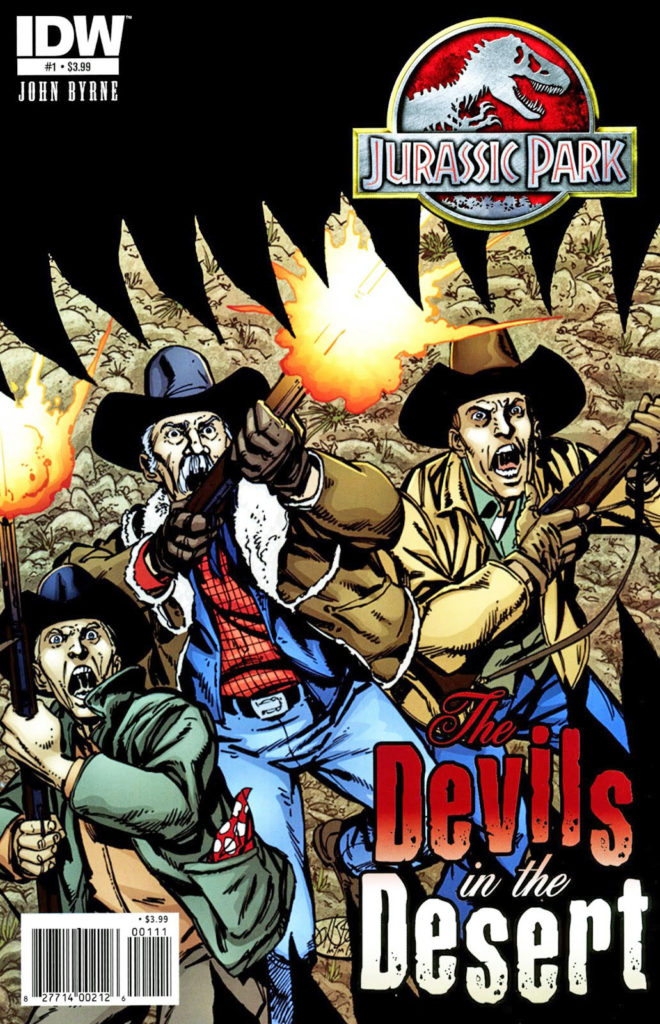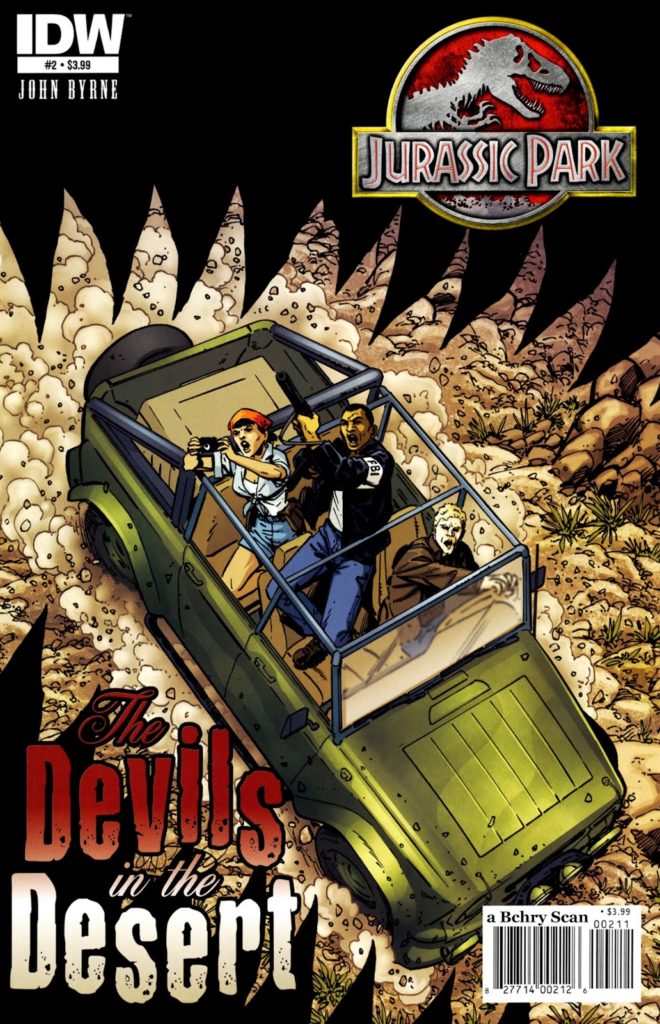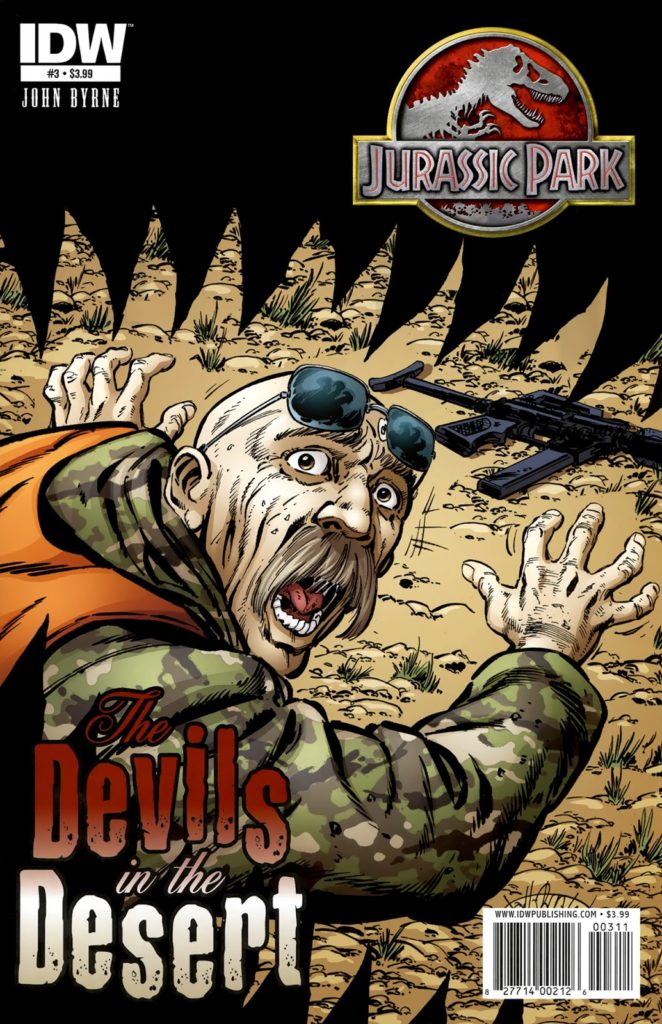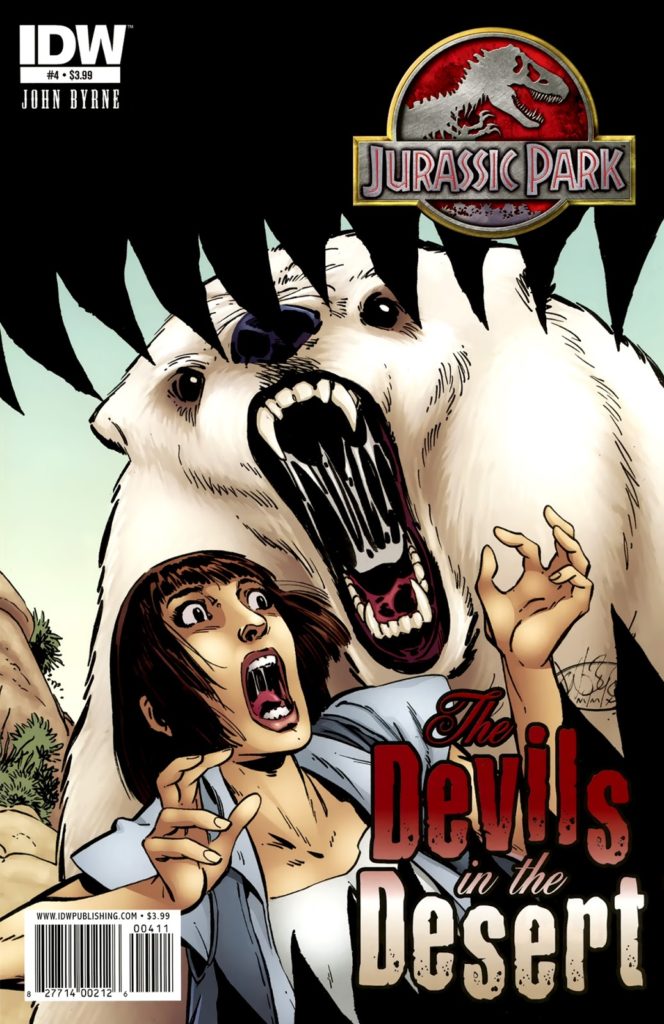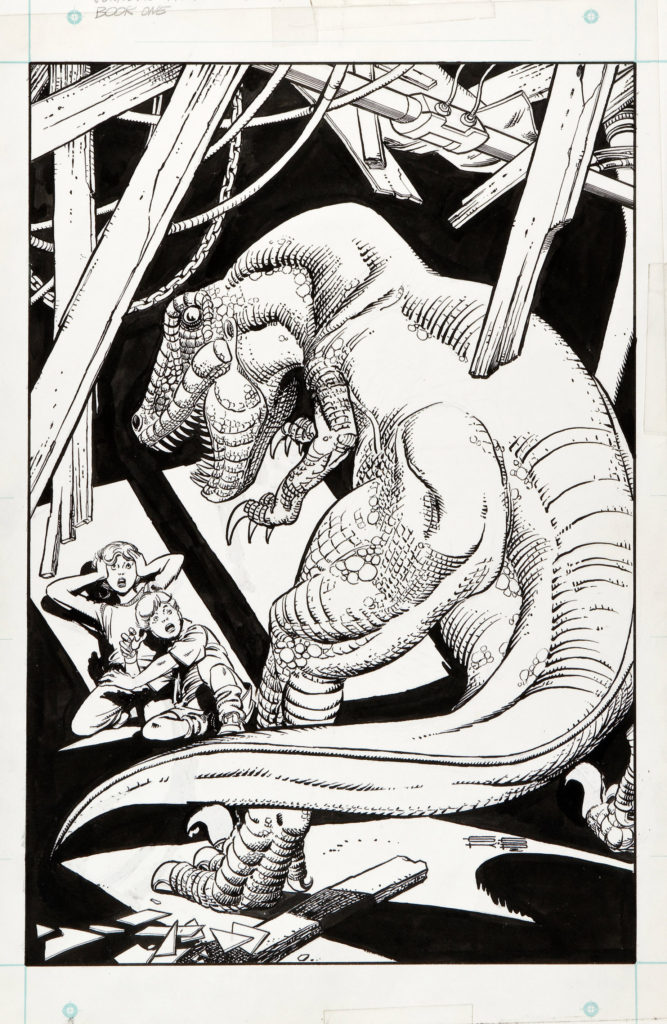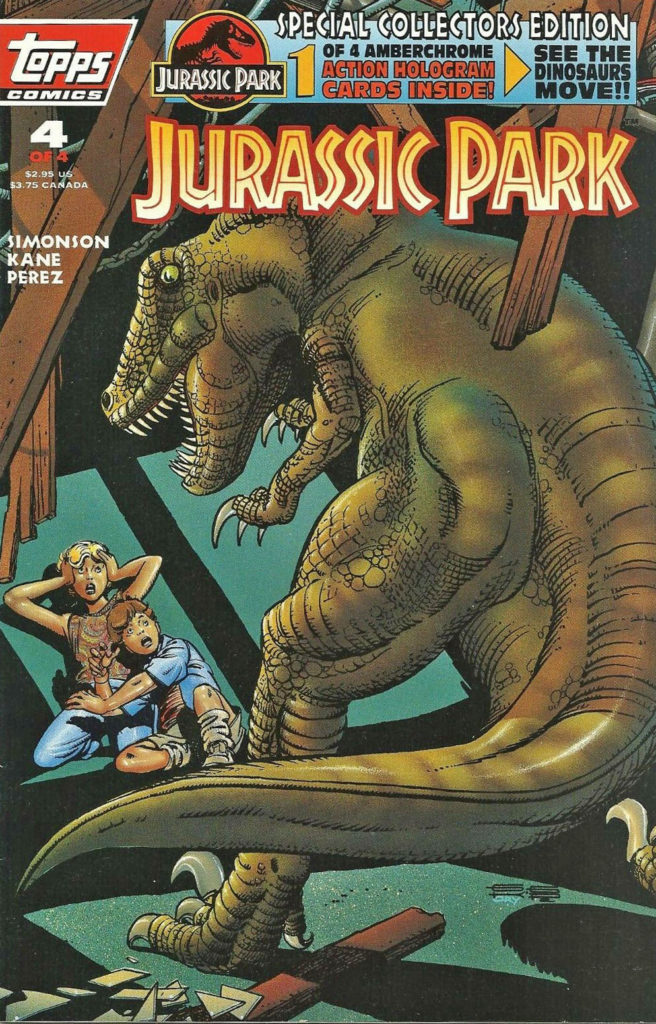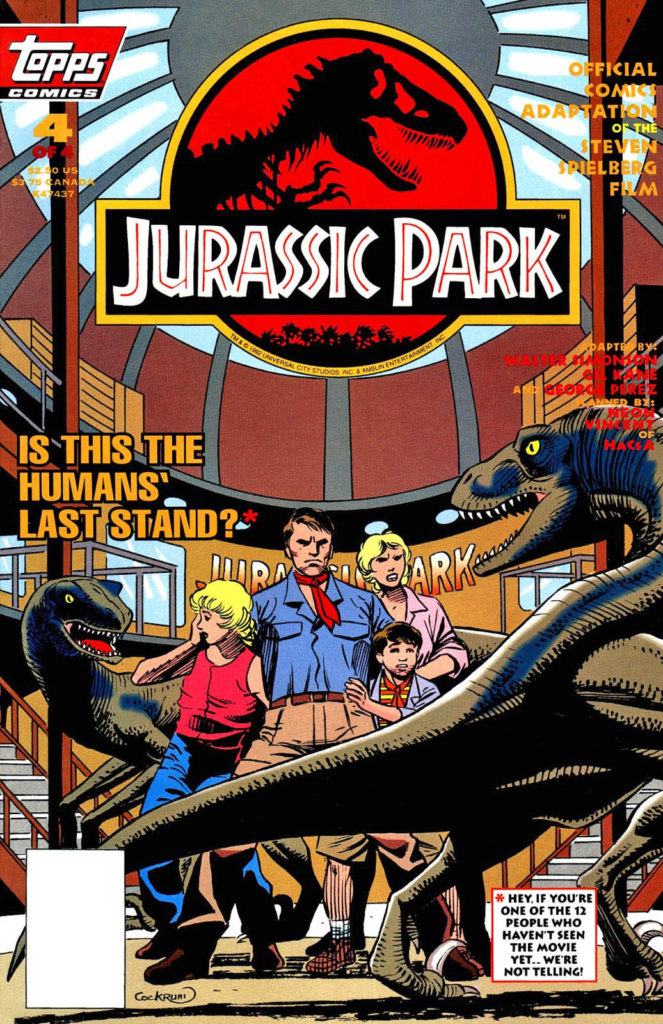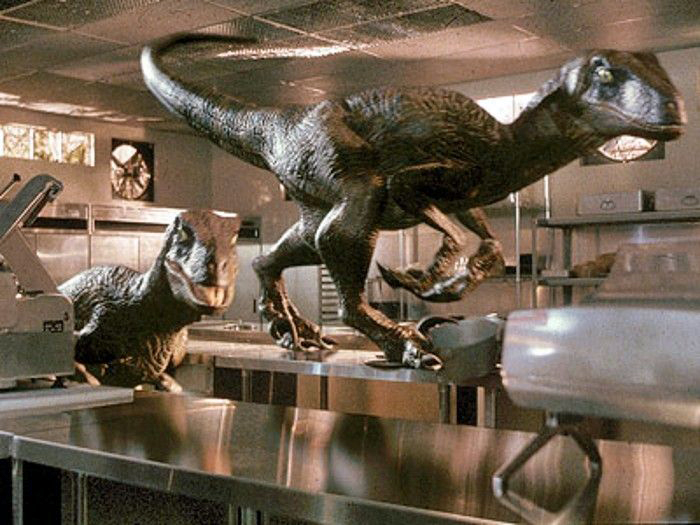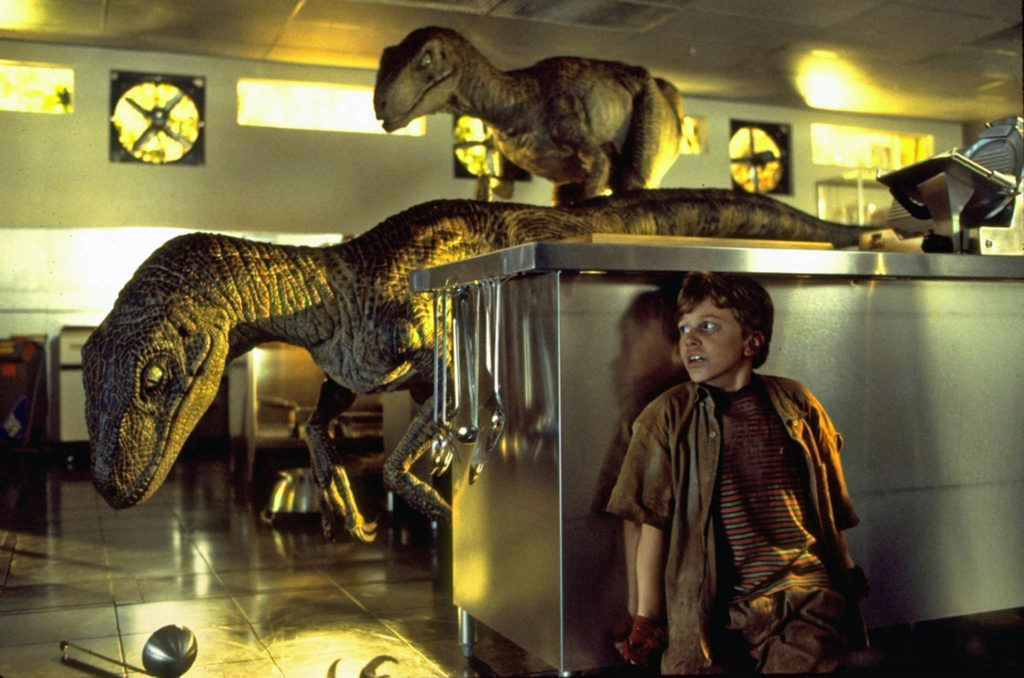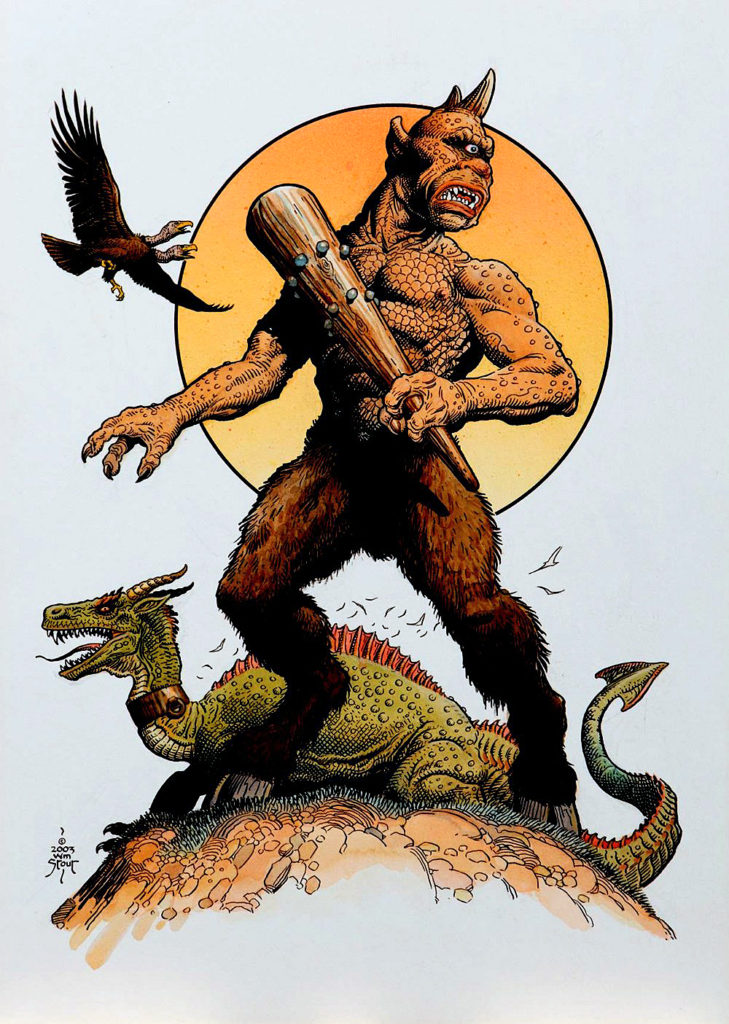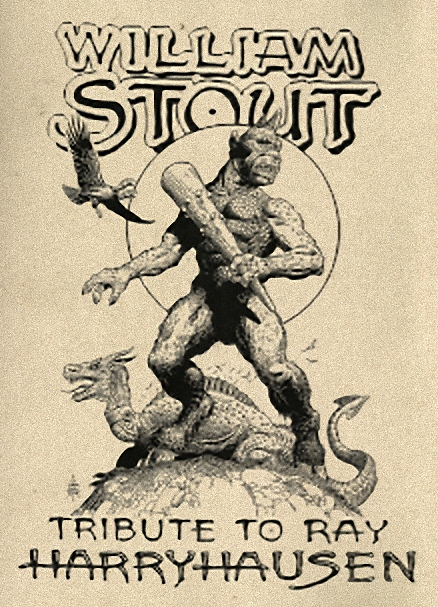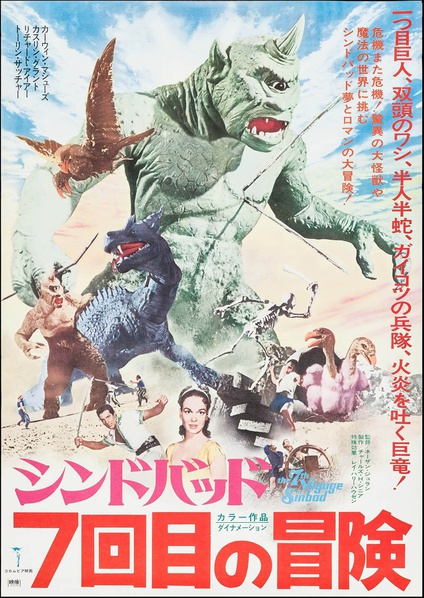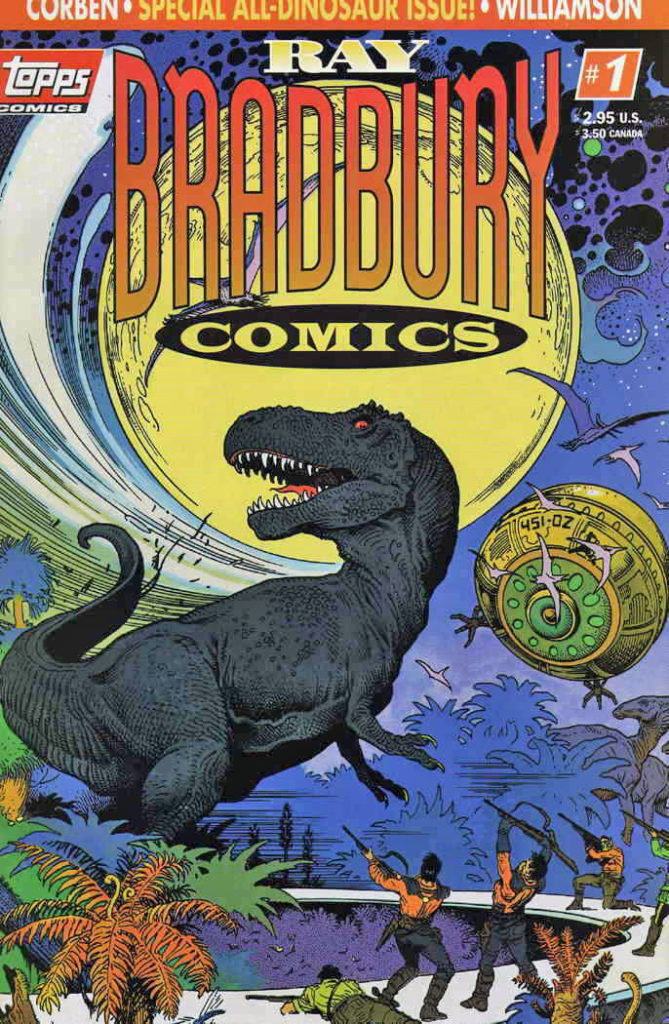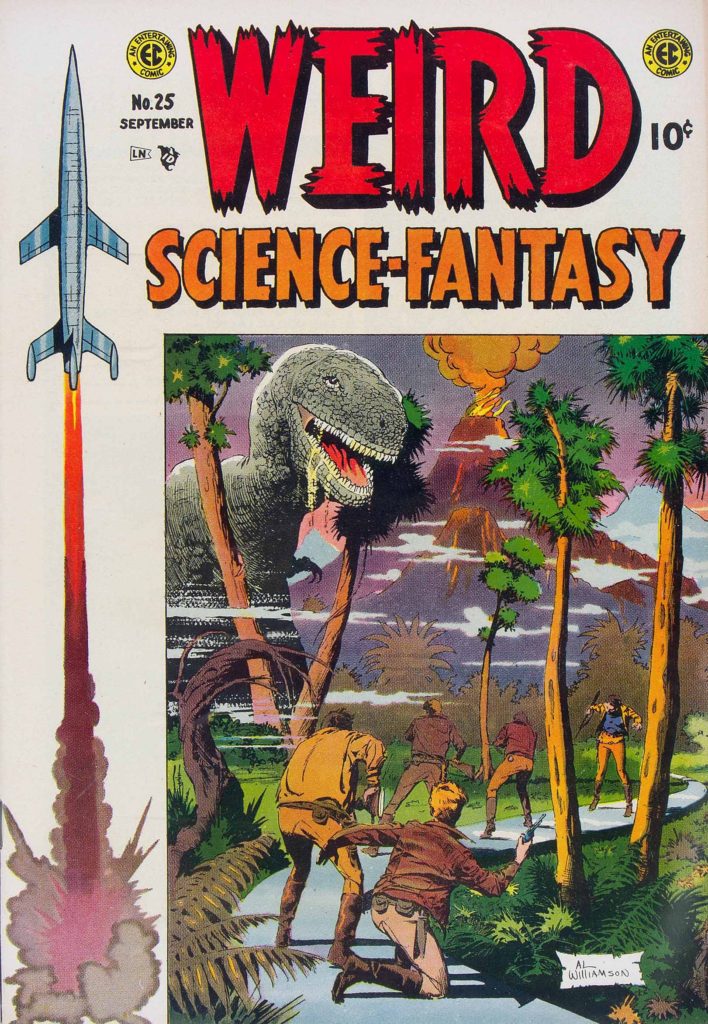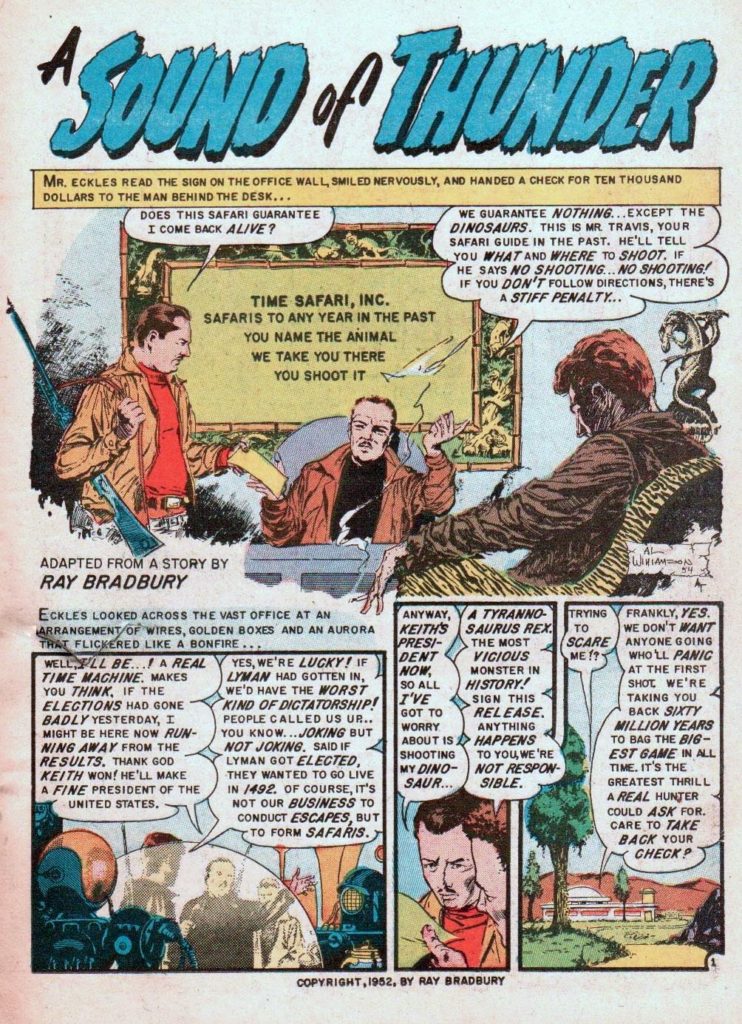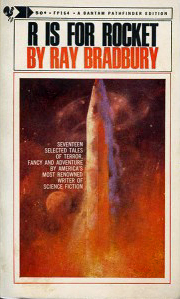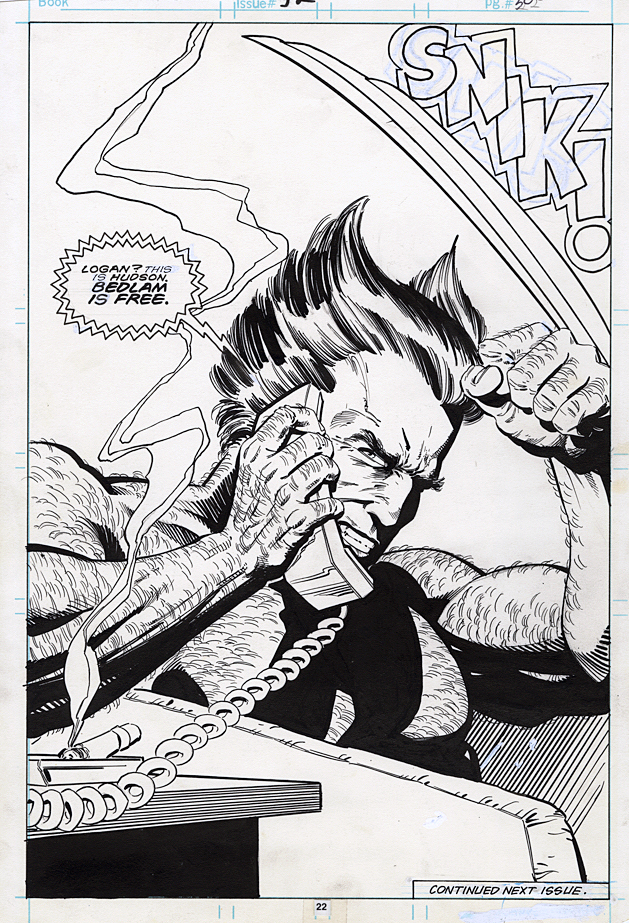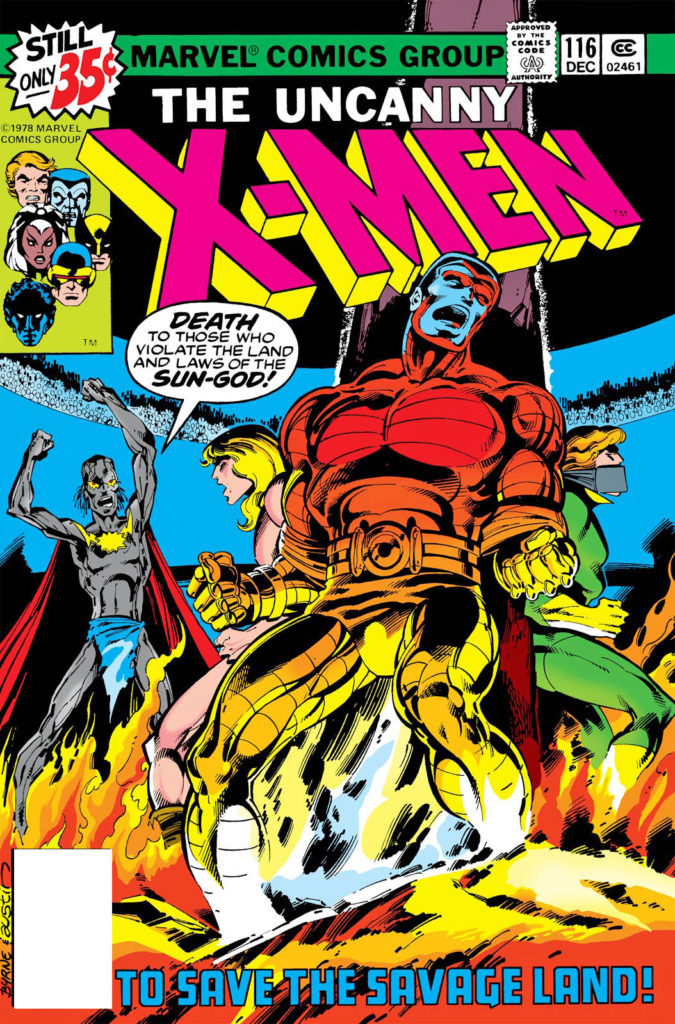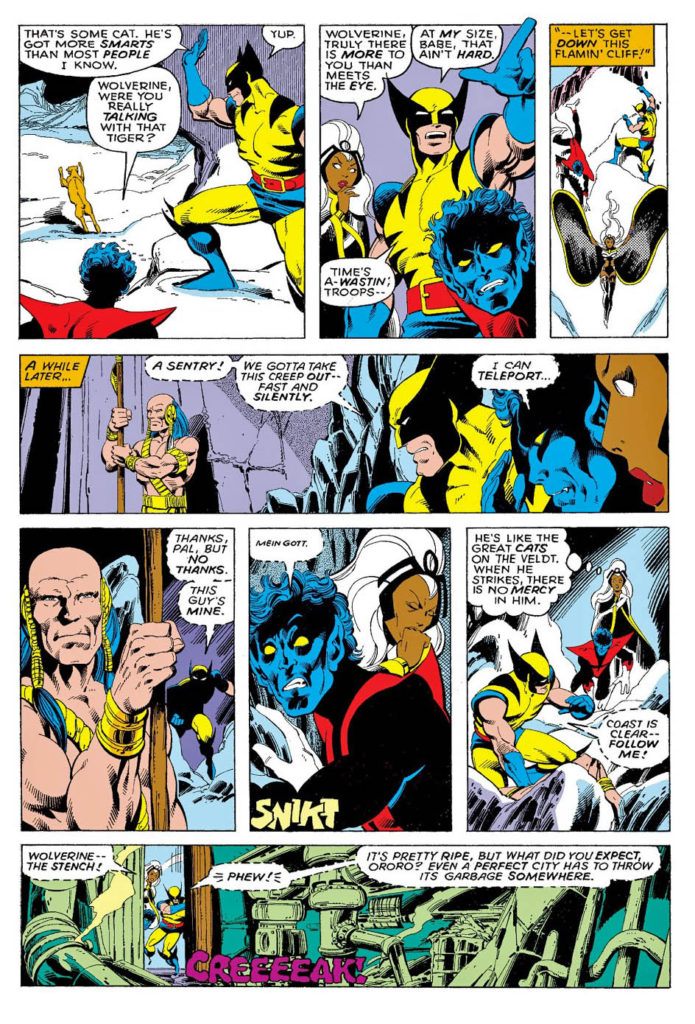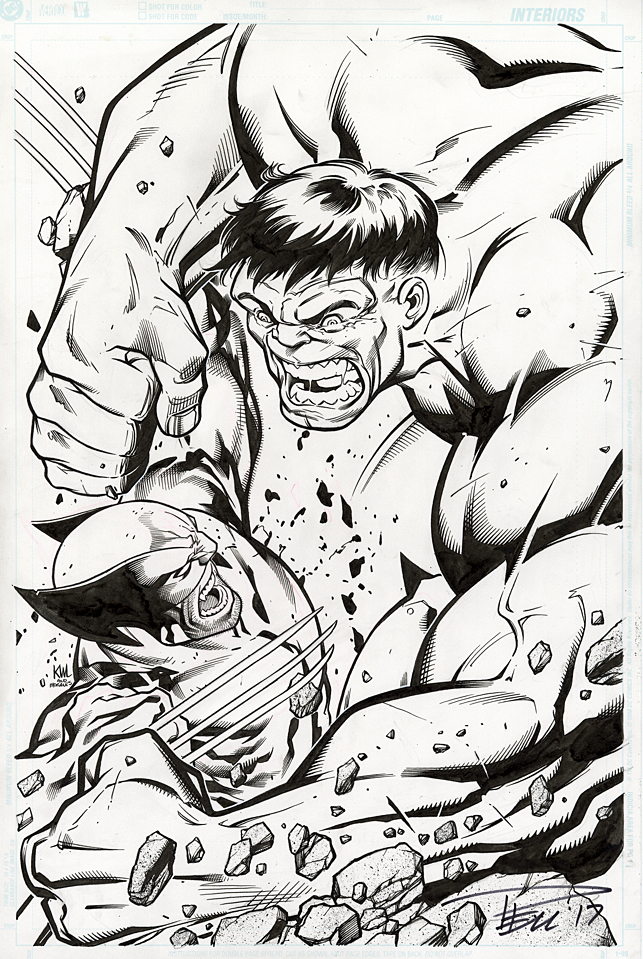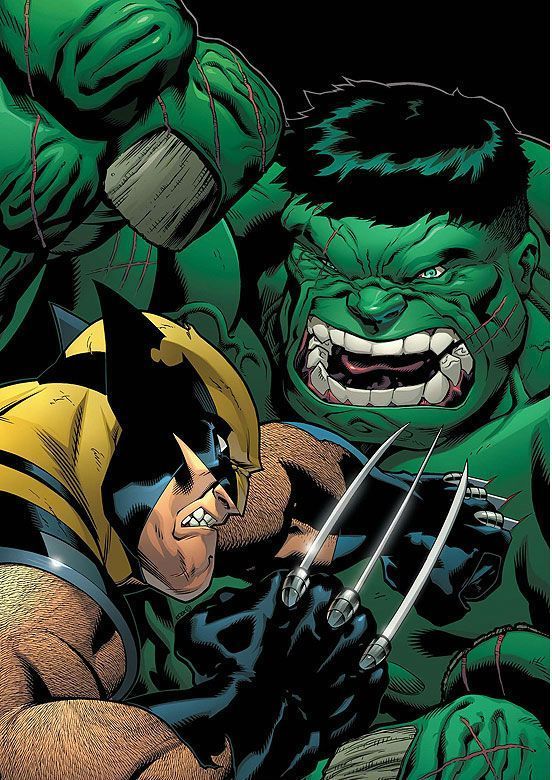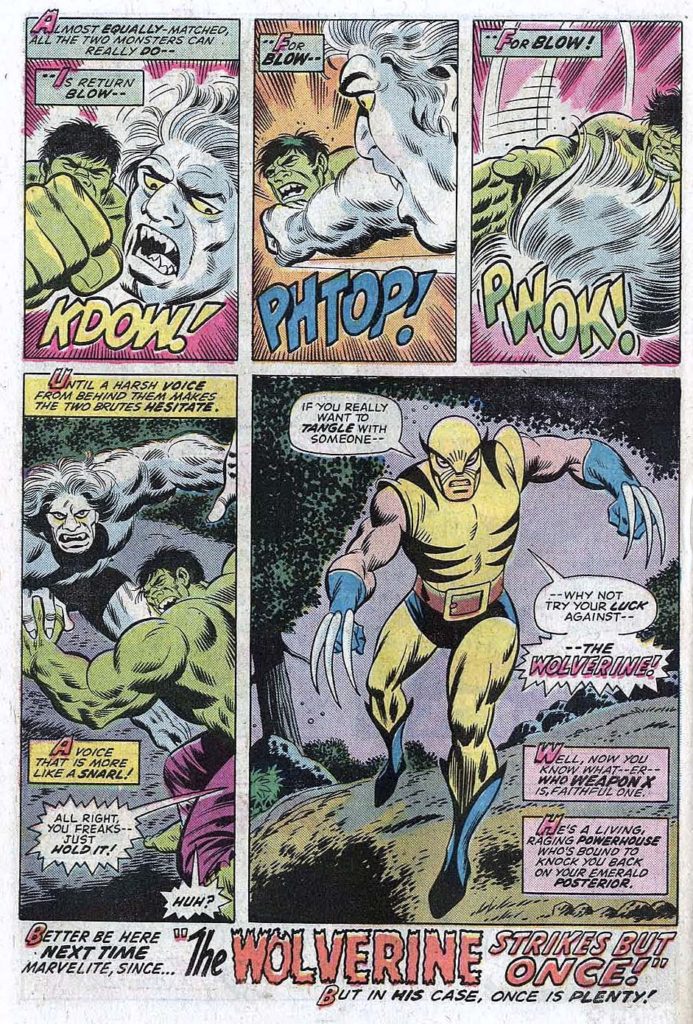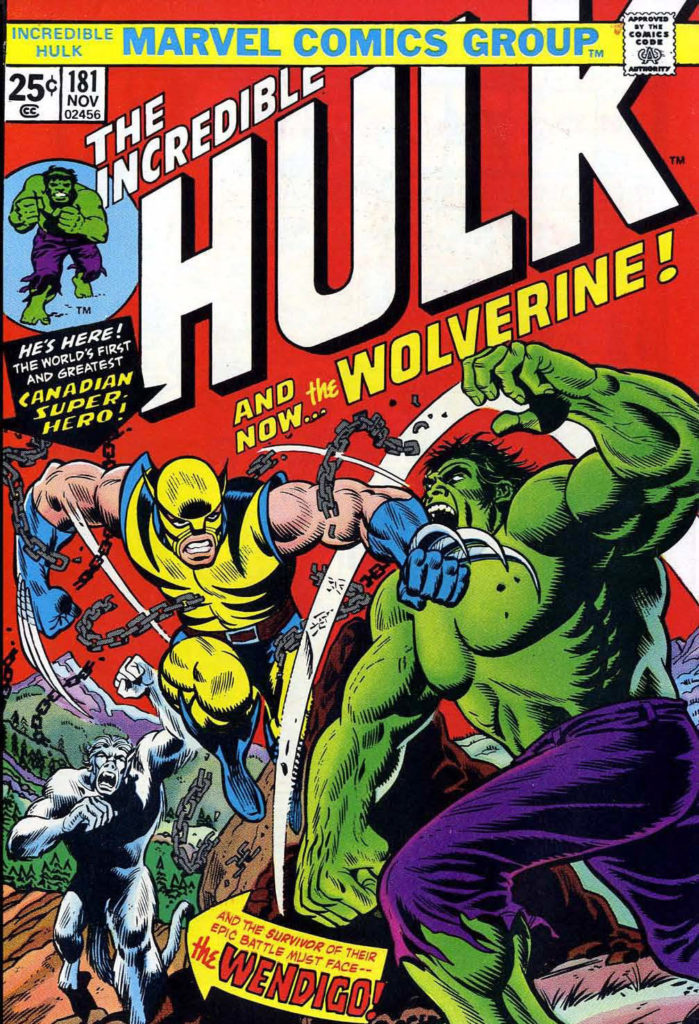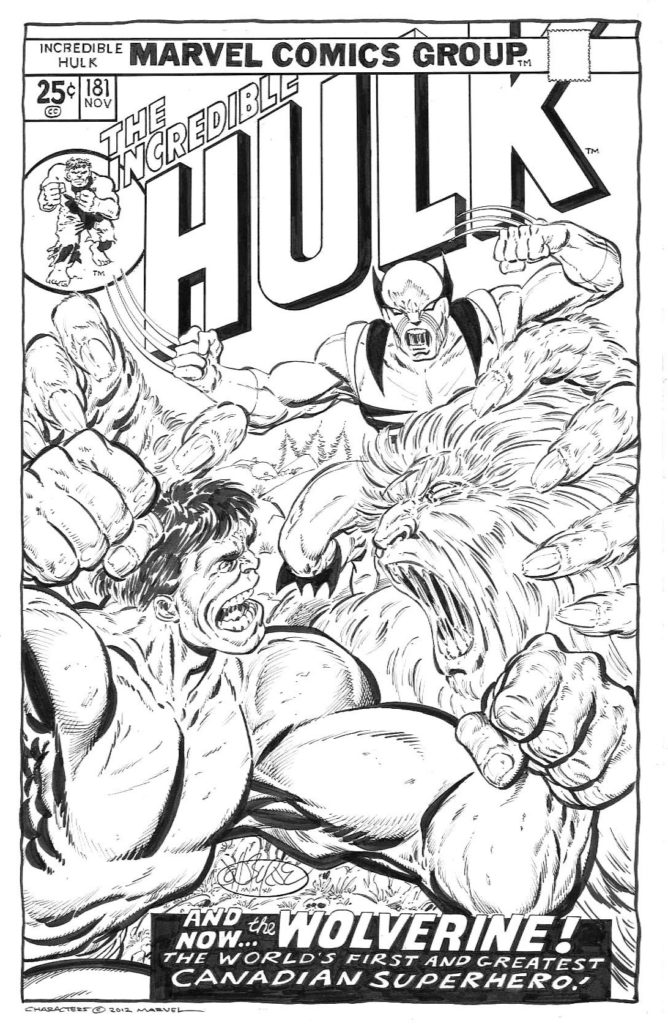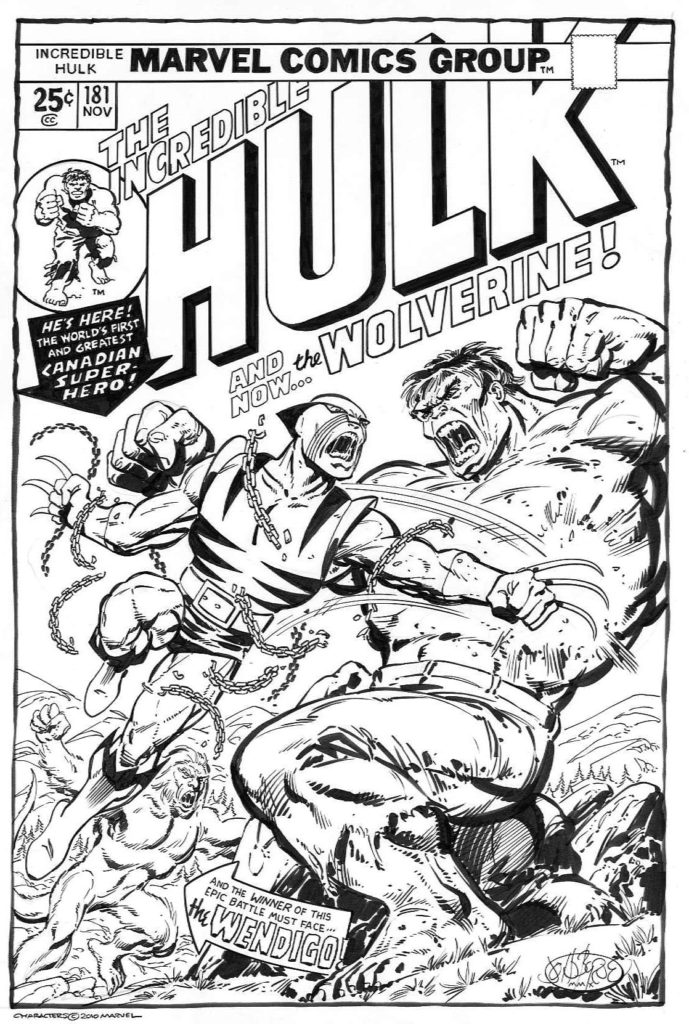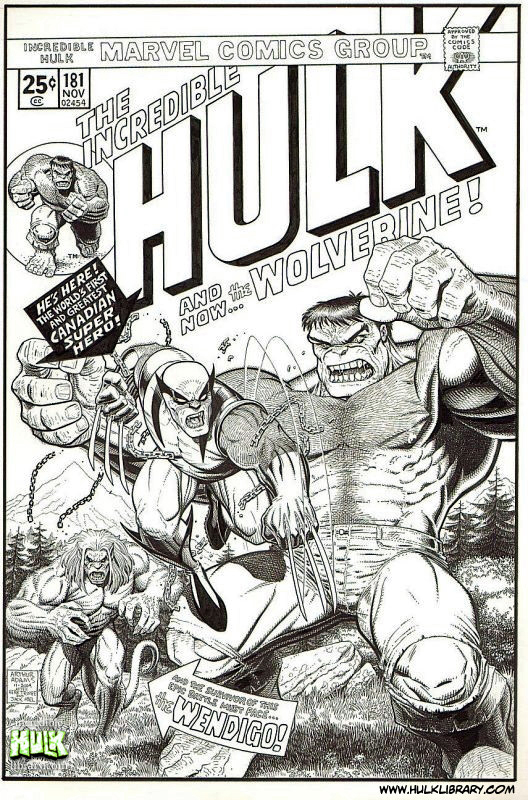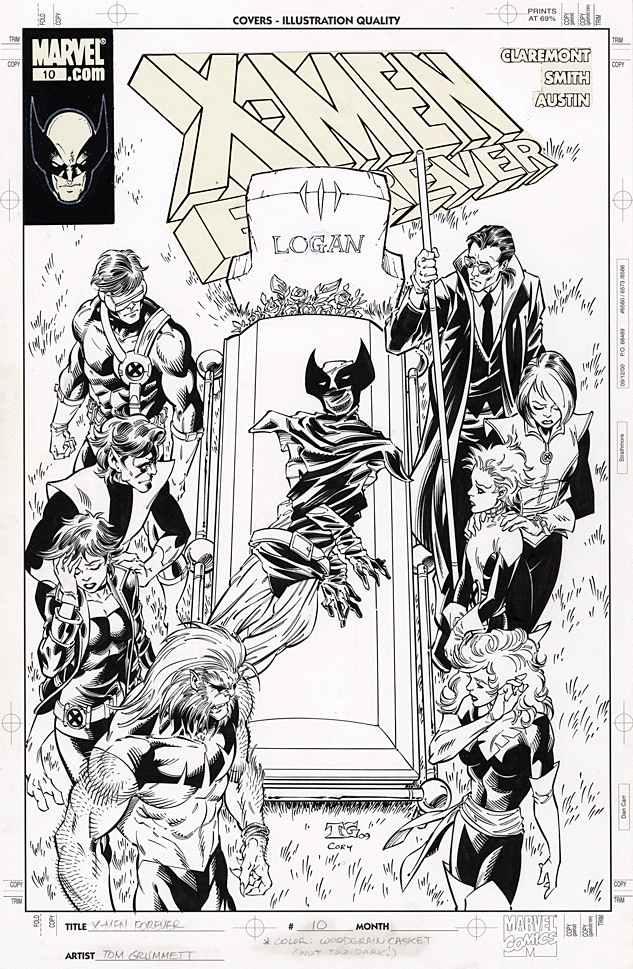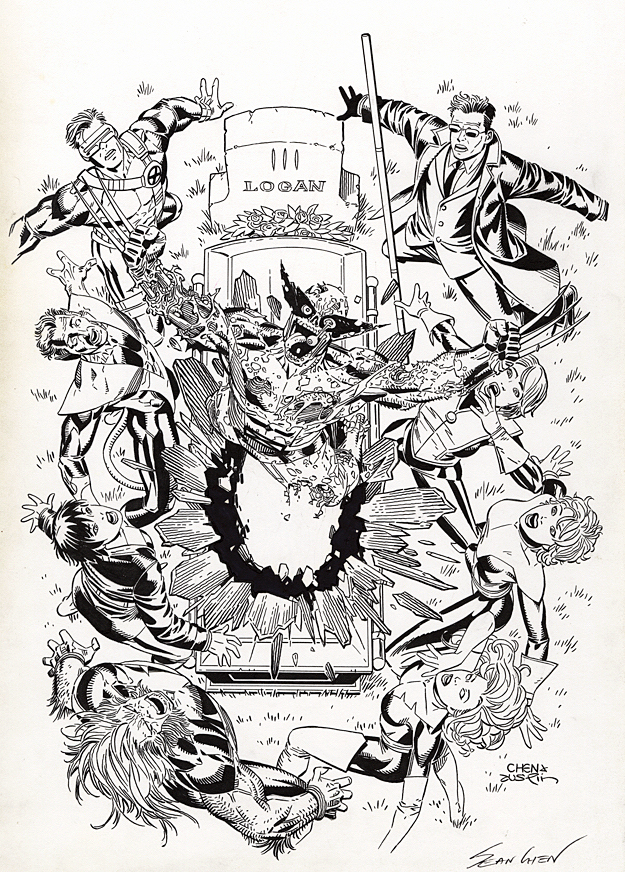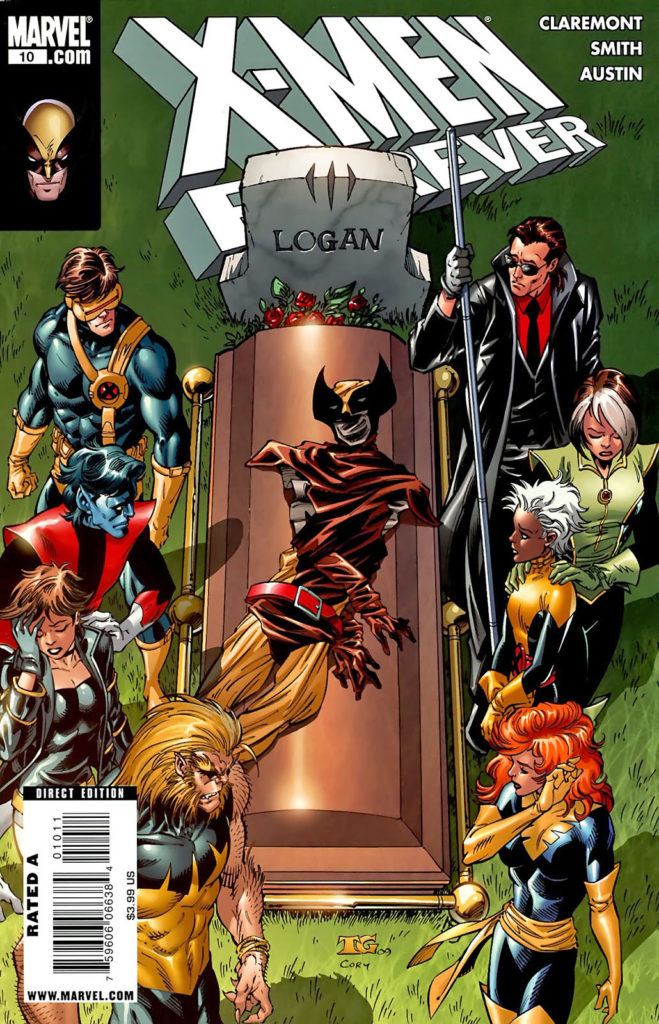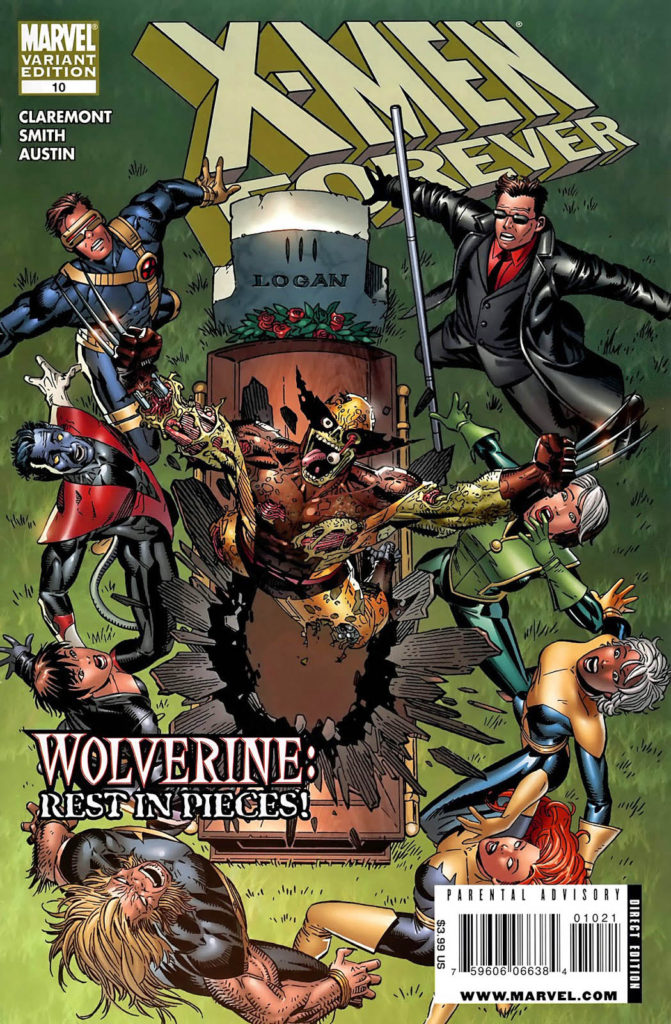Rich Burchett — Flashy Team-Up
Justice Society of America #1, April 1991
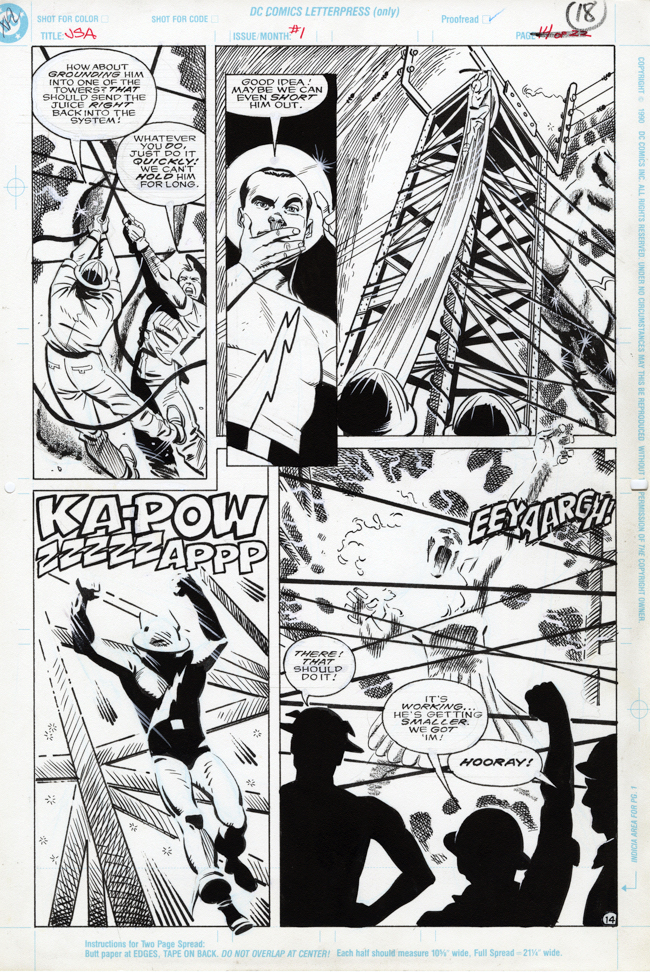
2020 marks the 80th anniversary of the very first super team in comic book history, The Justice Society of America.
Superhero comics were barely two years old, when a gaggle of heroes appeared on the cover All Star Comics #3. Imagine the reaction of a young comic book reader at his local newsstand or candy store seeing Doctor Fate, Hourman, The Spectre, Green Lantern, The Atom, The Sandman, Hawkman, and of course, The Flash all seated at the one table.
Brain blown.
During the various “Comic Book Ages” (Gold, Silver, Bronze, Modern, et al) the original Flash seems to symbolize the Society more than any one character. This is partly due to the fact that he is the very first Golden Age superhero to be reintroduced into the Silver Age (Flash #123).
In this 1991 JSA mini-series, one classic character receives solo billing in each issue, and the Flash leads off in issue #1, with art (pencils and inks) by the often under-appreciated Rich Burchett. This is a fun and dynamic page of the Flash in action, with the action taking us through the page.
And, I find it amusing that Flash’s helmet and the construction workers are not that dissimilar. If only those guys could run at super speed…
(My pal Mike Gold edited the series, and he provides a lovely history of the JSA, and an origin of this specific series, which is provided below.)
Mike Gold.

